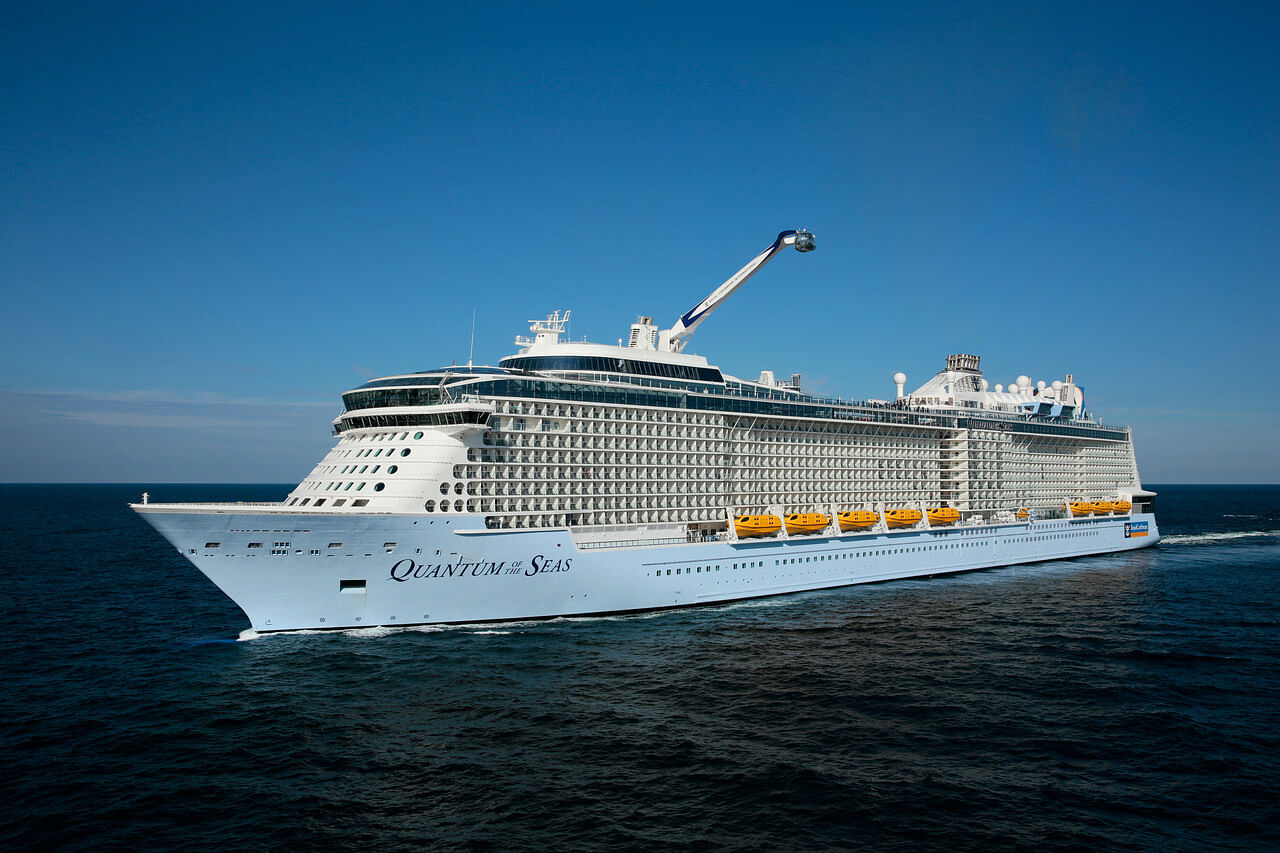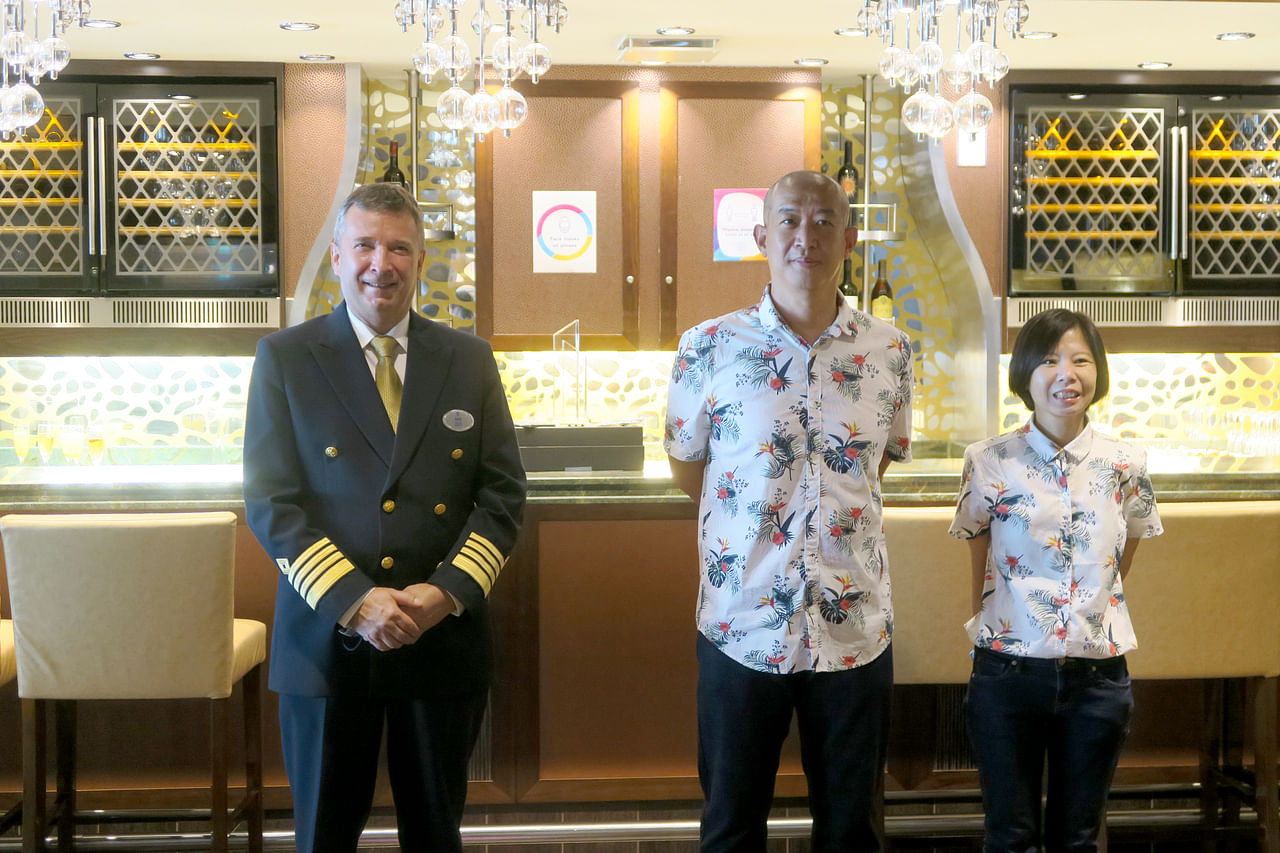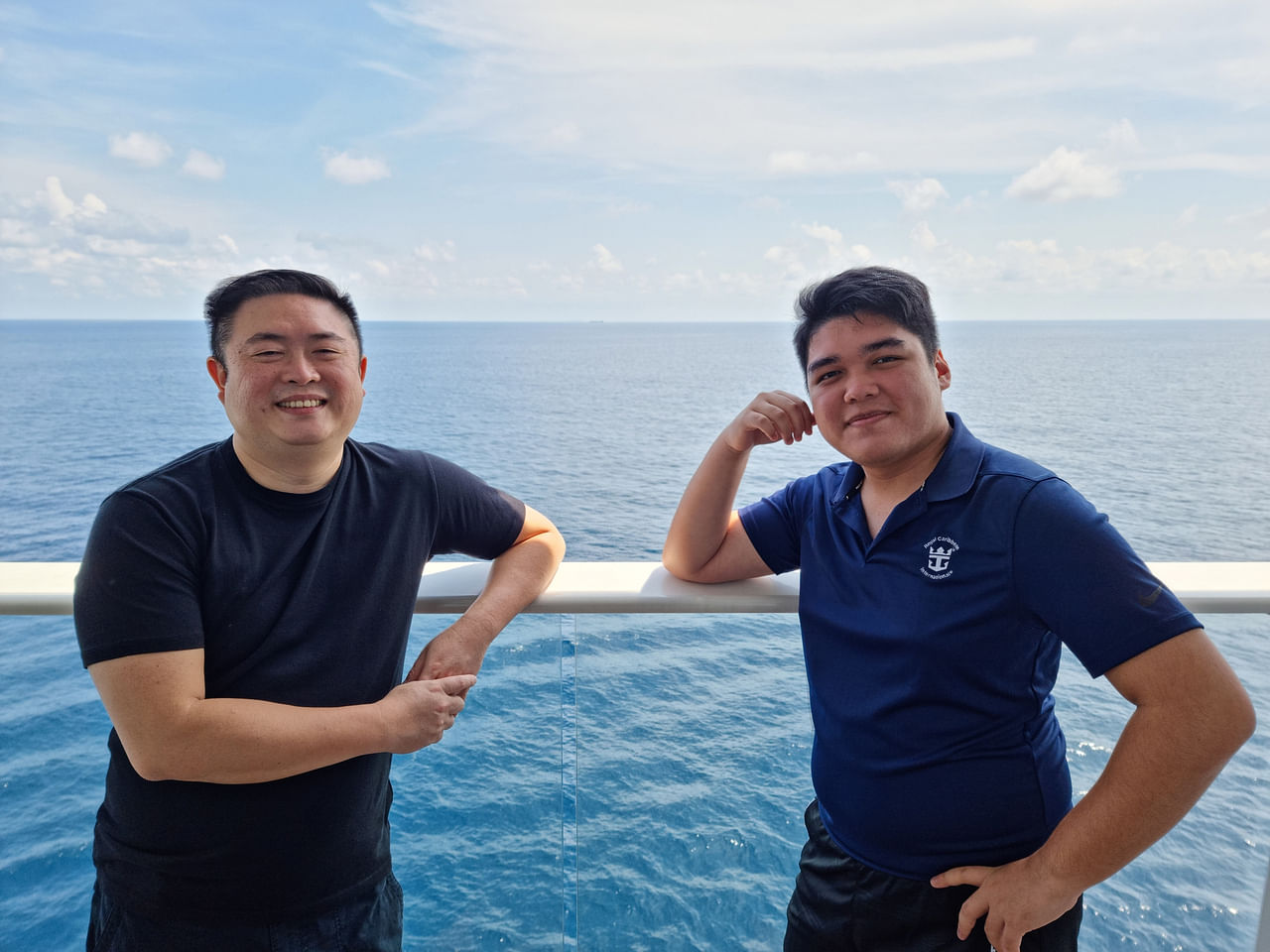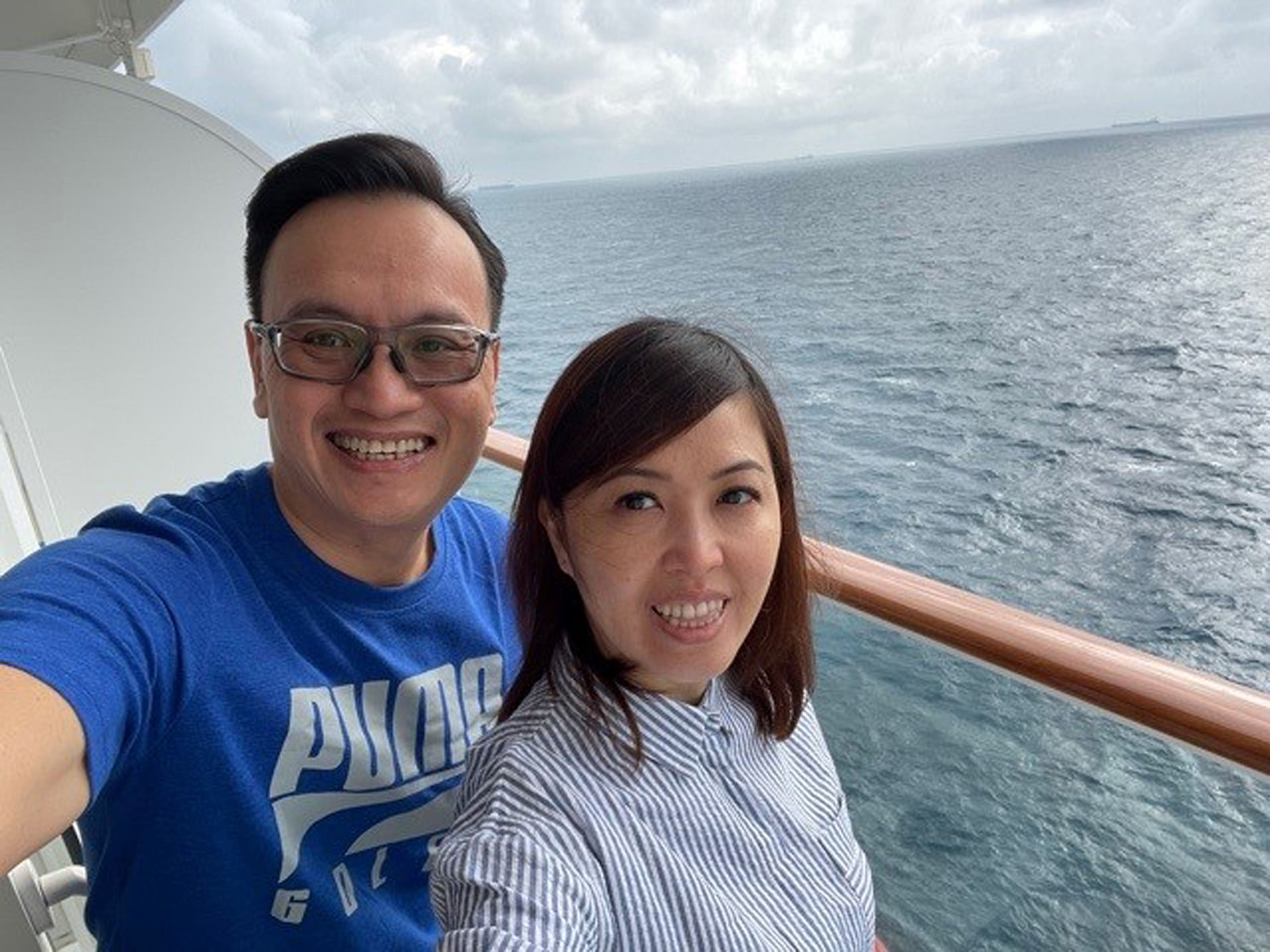Serial cruisers: They spend up to 6 weeks at sea and have clocked 30 sailings this year
Sign up now: Get ST's newsletters delivered to your inbox

Royal Caribbean International says fewer than 10 per cent of cruisers have gone on multiple sailings.
PHOTO: ROYAL CARRIBEAN
Follow topic:
SINGAPORE - Spending a month and a half on board a cruise to nowhere might sound like a recipe for cabin fever.
In fact, that is what Mr Tok Soo Leng's friends often say when they hear about his trips.
But from February to April this year, that was exactly what Mr Tok and his wife did - they booked 12 back-to-back cruises on Royal Caribbean International's Quantum of the Seas, disembarking only to clear immigration each time.
Despite the long voyage, they did not get bored shuttling between their balcony, the pool and the adults-only Solarium, with whirlpools, deck chairs and a bar under a glass canopy at the ship's bow.
"There is no need to plan anything and my wife doesn't have to do housework," says Mr Tok, a semi-retired site coordinator, 53. His wife, 49, is retired.
They have been cruising about five times a year since 2011 and upped that to 30 times each year in 2018 when Mr Tok semi-retired.
Since 2018, they have spent about $30,000 to $40,000 a year to go on cruises.
This year, they have done 22 sailings and will go on 30 more by December, spending double their usual.
With travel off the table for now, more are following in their wake, turning to frequent cruising to scratch the vacation itch.
Long cruises are not uncommon in Britain or the United States, with some companies offering sailings of more than 100 days. But this trend is just taking root in Singapore.
Royal Caribbean International, for instance, which began operating cruises to nowhere departing from Singapore last December, says fewer than 10 per cent of cruisers have gone on multiple sailings.

clcruiser29 - Credit to Royal Caribbean
PHOTO: ROYAL CARIBBEAN
Work, study and play on board
For some, working and studying remotely as a result of the pandemic has facilitated this lifestyle.
Eighteen-year-old Vensen Wong debunks the stereotype that cruises are the domain of older folks. The Nautical Studies student from Singapore Polytechnic says cruising offers the ideal setting for a hands-on education while doing his diploma.
"Once you look past the fun activities, you observe a lot of maritime elements such as how the crew deals with tricky situations like weather and traffic density," he says.
"When it comes to dealing with traffic situations, we learn the theory in school and practise in a simulator. Cruising lets me see all this in real life and better understand what the navigation team is facing," he adds.
A daily routine offers some structure. He wakes up at about 7.30am, takes online classes in the morning and afternoon, and spends evenings doing revision.
In between, he observes the crew at work, such as during berthing.
As part of Royal Caribbean's loyalty programme, he has visited the bridge - where navigation takes place - and spoke to the crew about operations, hospitality and the day-to-day realities of running a ship.
"It made me consider a career working on a cruise ship, and if that will be a good fit for me," says Mr Wong, who has gone on 18 cruises on Quantum of the Seas since December last year.
His longest trip was a three-week stint in May and he is planning to top that with a 54-day trip in September this year.
His parents, whom he says are supportive, join him for certain sailings.
Others, such as Mr Alvin Livingstone Chew, 44, have taken working from home a step further.

clcruiser29 - Credit to Vensen Wong
PHOTO: Vensen Wong
Since this year, the head of business development for a hedge fund has been cruising on Quantum of the Seas about five times every month, and has clocked between 30 and 40 sailings - all without taking a single day of leave.
He, too, has created a routine that involves a morning workout, and fielding e-mails and conference calls through the afternoon.
Working US hours keeps him up late, but the trade-off is being able to soak in a hot tub after breakfast and clock at least 10,000 steps walking around the ship every day.
"There is peace and quiet to do your own thing and collect your thoughts for work, especially as a solo traveller," says Mr Chew, who is single.
His bosses and colleagues know he often works from a cruise ship, and are understanding as long as he is contactable via e-mail.
"Covid-19 has allowed me to do my job like this. People are more wary (of the virus) and are happy to do calls rather than meet face to face," he adds.
Bang for the buck
Cruisers who spoke to The Straits Times say they pay between $100 and $300 a night, which they consider good value as it includes meals, entertainment and lodging.
Ms Geena Hui, 46, has sailed six times on World Dream since last November with her husband, a 50-year-old deputy managing director at a construction firm. They pay about $200 a person for a two-night cruise.
World Dream is run by Genting Cruise Lines.
"These days, $200 can't go very far in Singapore. Even buying five boxes of durians costs over $100. With food and activities, I find cruising very affordable," says Ms Hui, a sales manager.

clcruiser29 - Ms Geena Hui and her husband onboard World Dream (1) Credit to Courtesy of Geena Hui
PHOTO: Courtesy of Geena Hui
Fresh programming is a regular draw. In March, she embarked on World Dream's getai cruise to catch performers such as Taiwanese singer Hao Hao and local getai singer Lee Pei Fen.
She has also gone on a Thai-themed cruise, part of a year-long line-up of country-themed itineraries that will take place on the cruise liner, and intends to book a Japan-themed one later this year.
Meanwhile, housewife Noormah Salim, 60, likes the privacy and convenience of pandemic cruising.
When it comes to meals, she says the halal food on board is plentiful and tasty.
Even sailing during phase two (heightened alert), where she and her husband could dine only in their cabin, failed to put a damper on her 60th birthday celebration.
"You feel like the ship is exclusively yours. The pool is not crowded and there is no one coming into the frame behind you when you take a photo," says Madam Noormah of the reduced crowds.
She has cruised four times on World Dream since last December with her husband, 62, a flexi adjunct teacher. Her eldest son, 35, and his family of five, joined them once.
The couple, who used to travel four times a year during school holidays, have two more cruises planned for September and December.
"Hopefully, the pandemic situation will improve after that. If not, we will continue cruising next March," says Madam Noormah.
Promotions help sweeten the deal. Royal Caribbean, for instance, is offering double the loyalty points for the Crown and Anchor Society membership programme.
Perks vary across six tiers of the programme, culminating in membership to the Pinnacle Club, where cruisers get benefits and special recognition such as lounge access, daily free drinks and free Internet.
It took Mr Tok and his wife 10 years of cruising before they attained Pinnacle Club status this year, becoming the first in Singapore to do so.
Mr Wong aims to achieve the same status this year alone, calling it a "rush to pinnacle".
"It is a good time for people in Singapore to earn this status," he says.
Still, beyond the perks, what keeps people coming back is the community on board, made up of a group of frequent cruisers and crew who have become friends. Even for solo cruisers, there is always company.
And over time, it is the small things that make cruising feel like home.
A waiter who knows their meal preferences; a chef who will whip up off-menu items; familiar faces as they walk around the ship.
Mr Chew sums it up: "How many times in your life do you get to see wild dolphins swimming by the ship? It is the small things that make up the big experience."
- For more stories on exploring Singapore, go to str.sg/sg-go-where.

